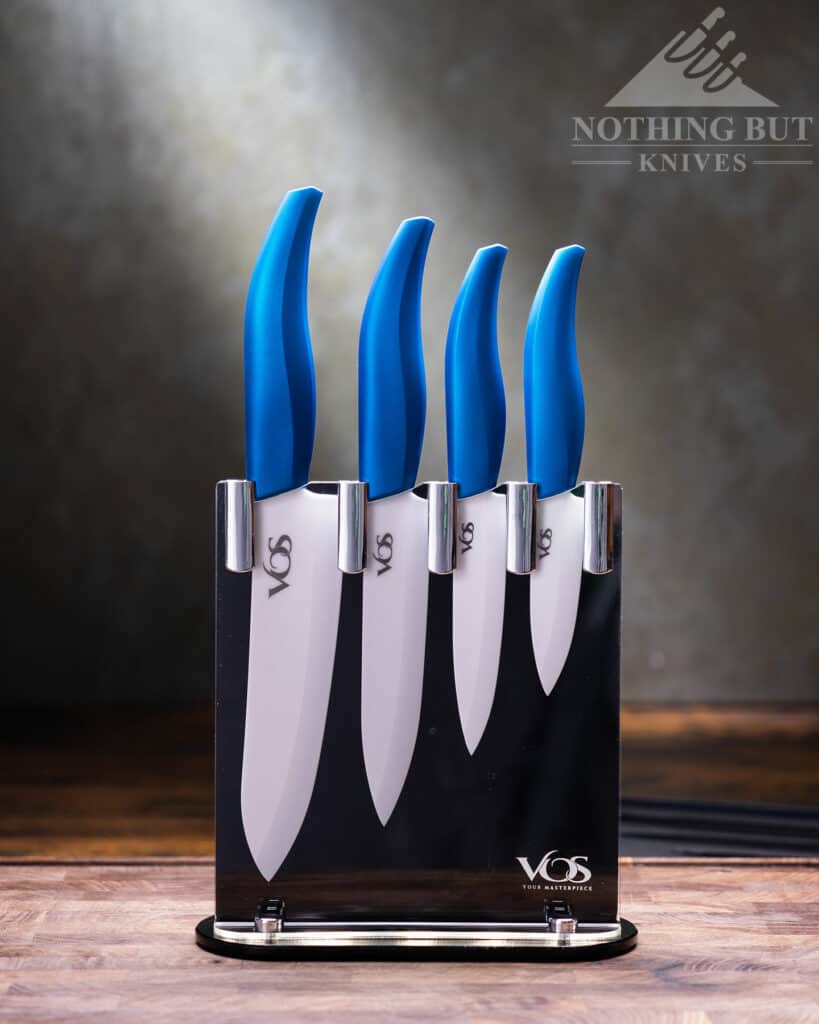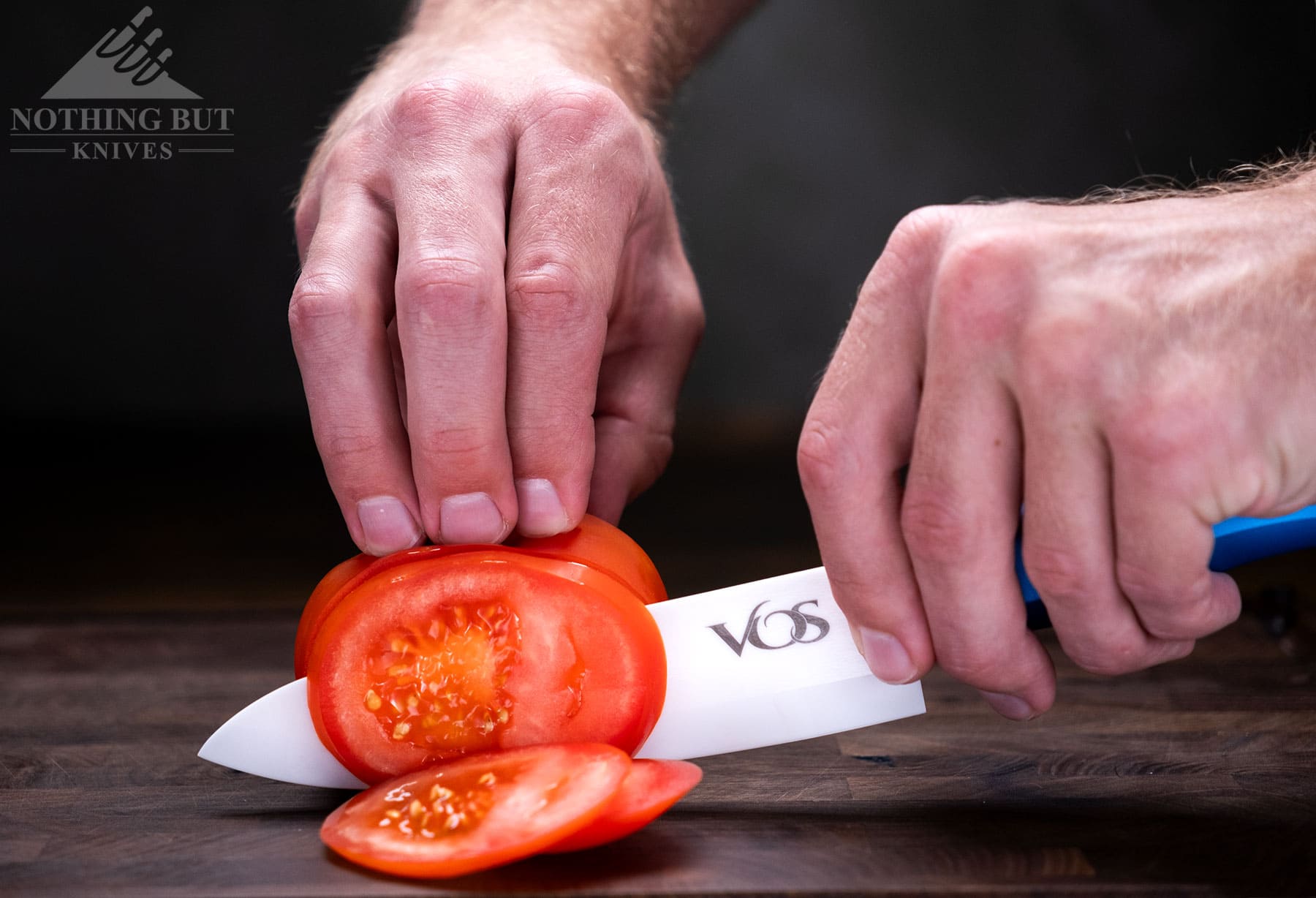Ceramic Knives Are Lightweight and Corrosion Proof, but not Great for Cutting Frozen Meat
We’ve seen ceramic knives being used by home chefs in shows like Master Chef USA. While they all serve the same function, a ceramic knife is a very different beast from a steel knife. They require the user to be a lot more careful as they cut as ceramic is a harder, more brittle material, but it’s an excellent choice for people highly concerned with corrosion and hygiene, or aren’t particularly fond of sharpening their knives.

Here are its pros and cons:
Pros
- Ceramic is a lightweight material, making most ceramic knives significantly lighter than the typical steel knife. That cuts down on hand fatigue quite a bit when you have a lot to cut up.
- Ceramic is also the second hardest material after diamonds, so ceramic knives tend to stay sharper longer compared to steel knives.
- Ceramic knives are denser and less porous so they are more sanitary to use.
- Because ceramic is inert and has fewer pores than steel, ceramic knives won’t transfer odors or taste when you chop different food types. If you chop spices and need to slice pieces of meat, all you need to do is to give your ceramic knife a quick rinse and it won’t transfer any spiciness to the meat.
- Ceramic means no metal, so no rust.
Cons
- Ceramic is very brittle. Ceramic knives are not meant to be used to cut frozen meat, bones, or anything that can’t be easily sliced.
- They also tend to be more expensive. It used to be difficult to find budget ceramic knives that were decent quality, but that has changed over the course of the last few years as more and more durable ceramic knives are being sold at cheaper prices.
- Ceramic knives are meant to slice. You absolutely cannot use it to chop, pry, or cut anything with an especially thick skin like gourds. You will need your trusty stainless steel chef or butcher’s knife for that.
- It is damn near impossible to sharpen a ceramic knife at home, so even though the edges will still in shape over several years of (proper) use, you won’t be doing much edge modification at home. Thankfully most companies who sell ceramic knives also offer sharpening services.
Start With One Knife Rather Than A Whole Set

If you are unsure if ceramic knives are something you would like to add to your kitchen cutlery set, it might be a good idea to just buy one to test out rather than starting with a whole set. We recommend starting with a ceramic chef’s knife as they’re usually the most versatile.
If you really like the ceramic chef’s knife you may want to invest in an entire set of ceramic kitchen cutlery, or you may want to stick stainless steel knives for everything but the chef’s knife. Check out our article on the best ceramic chef knives under $50 if you are looking for a budget ceramic chef’s knife.

My Kyocera knife is superior to my crofton ceramic knife but the price of the crofton is way less and therefore it is in use far more often. I use ceramic knives every day and the 1 stainless steel knife that I have is only used to cut pumpkin and really hard products or a tough stem when I am gardening. The ease of cutting tomatoes or other fruit and vegetables without bruising them is all the justification needed to purchase a ceramic knife.
Right on, Carol. Cermaic knives seem to be a good fit for your food prep needs. It’s always nice to hear how folks use their kitchen knives.